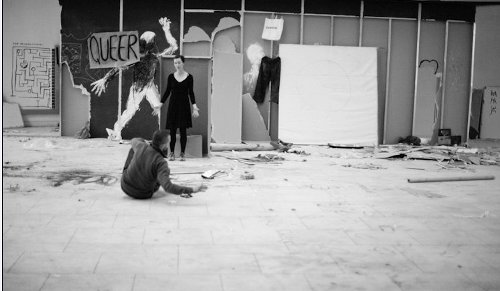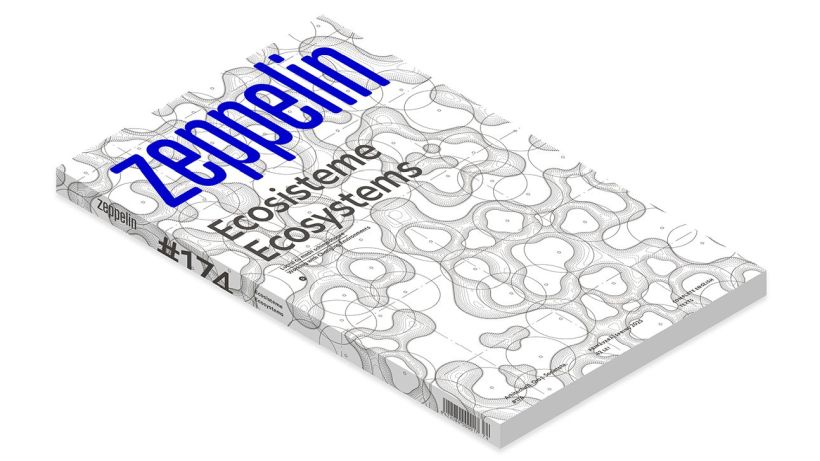The building site containers were set up around Bucharest’s National Theatre. According to a project delayed for a couple of years, the theatre is supposed to be reinforced and modernized in the next three years starting from this autumn. The process will involve the dismantling the arcaded façade ordered by Ceausescu in the 1980s; the initial façade will be put in place along with the cantilevered roof, which means that the original project designed by Horia Maicu, Nicolae Cucu, and Romeo Belea will be followed in its outlines.
- Recommend on FacebookTweet about itPost de: Anca Bordean
The house on the outskirts of Sibiu is gently placed on a difficult plot and finds a subtle balance between openness and protection.
The house is located in a residential area with lots of terrains whose shapes and sizes come out further to plotting a steep land. After the Revolution, these plots offering a double access from the edging streets have been subdivided in an uncontrolled manner.
- Recommend on FacebookTweet about itPost de: Constantin Goagea
I would have never believed to pick up again the topic of Buzesti-Uranus axis that soon (see issue 91). “The Platform for Bucharest”, other NGO’s and the media have brought before justice a decision of Bucharest Municipality and the court pronounced the Master Plan of the operation illegal.
- Recommend on FacebookTweet about itPost de: David Chipperfield Architects
A cemetery extension located on an island between Venice and Murano seeks to redefine some of the original qualities of this place, while offering a greater sense of the lagoon context.
The San Michele Cemetery, Venice’s principal cemetery, is located on an island between Venice and Murano. This historic site has been in continuous development for over four hundred years but has recently evolved to a point where the romantic image of its outer face is in contrast to its interior municipal character.
- Recommend on FacebookTweet about itPost de: Constantin Goagea
Do it yourself (or DIY, the equivalent of “Fa-o tu insuti”, or FTI in short) stands for a popular culture, a kind of vernacular attitude on top of an industrial system. Although it does not get its own resources or technologies (similarly to the vernacular sytem), FTI-DIY is that way of making things following simple instructions (such as cartoons), on cheap tools and technologies (low-tech) – screwdrivers, hammer, drills etc. and a finite number of people to move and use the tools, components (e.g. the members of a family).
- Recommend on FacebookThis website uses cookies to improve your experience. We'll assume you're ok with this, but you can opt-out if you wish.Accept Read MorePrivacy & Cookies Policy
Privacy Overview
This website uses cookies to improve your experience while you navigate through the website. Out of these, the cookies that are categorized as necessary are stored on your browser as they are essential for the working of basic functionalities of the website. We also use third-party cookies that help us analyze and understand how you use this website. These cookies will be stored in your browser only with your consent. You also have the option to opt-out of these cookies. But opting out of some of these cookies may affect your browsing experience.Necessary cookies are absolutely essential for the website to function properly. This category only includes cookies that ensures basic functionalities and security features of the website. These cookies do not store any personal information.Any cookies that may not be particularly necessary for the website to function and is used specifically to collect user personal data via analytics, ads, other embedded contents are termed as non-necessary cookies. It is mandatory to procure user consent prior to running these cookies on your website.


.jpg)
